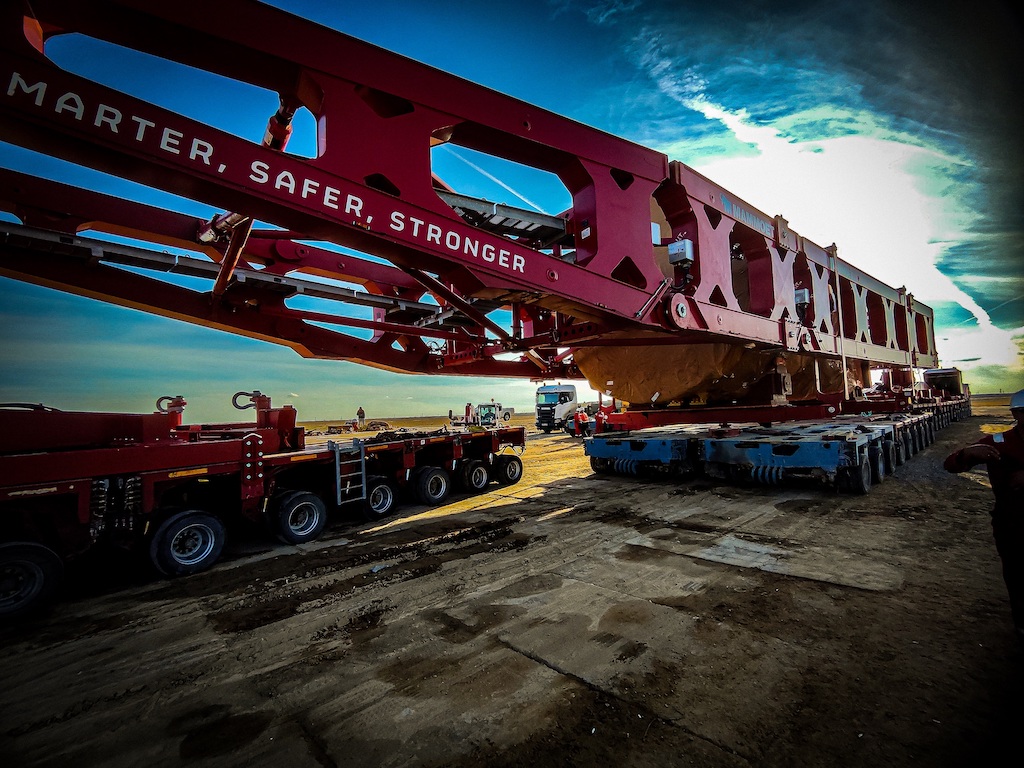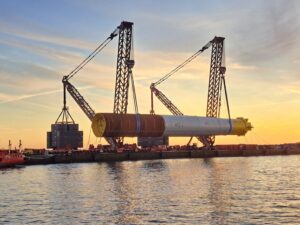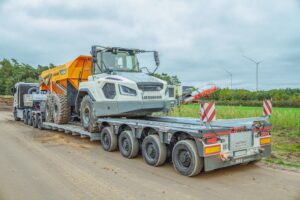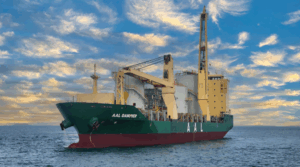Mammoet was presented with a challenging task by Globalink Logistics when it was asked to help transport heavy components for the construction of a new power plant in Uzbekistan’s Shirin city. ACWA Power had developed the 1.5GW combined cycle gas-turbine (CCGT) power plant, which is a key part of the Uzbekistan government’s efforts to enhance efficiency and production capacity of its electricity while reducing environmental impact and promoting economic growth.
As Uzbekistan lacks access to the sea, Caspian Sea ports are typically used to receive any Out of Gauge (OOG) cargo. However, Mammoet chose the Port of Bautino in Kazakhstan for this project. After the OOG components arrived at the Caspian port, the cargo would face a 2200-kilometre road trip to Shirin. Mammoet’s team of engineers, led by Marek Lysko, Operations Manager, began to plan the best way to transport the heavy components.
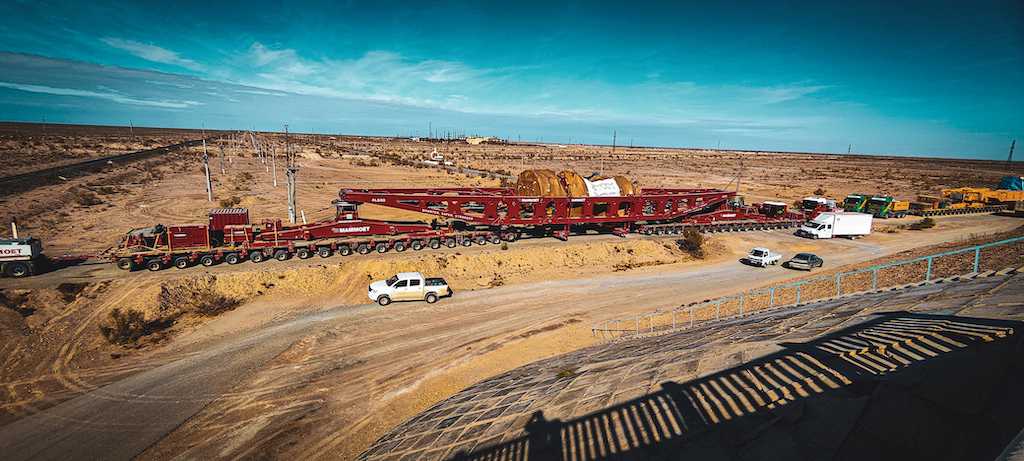
Mammoet had a presence in the Caspian region since 2004, and it was well-established at the Port of Bautino since 2018, with access to crawler cranes, conventional and Self-Propelled Modular Trailers (SPMTs), and a yard with a maximum allowable ground bearing capacity of 30 t/m2. The port is also connected to critical transport corridors, which improves the efficiency of heavy load transport through the region.
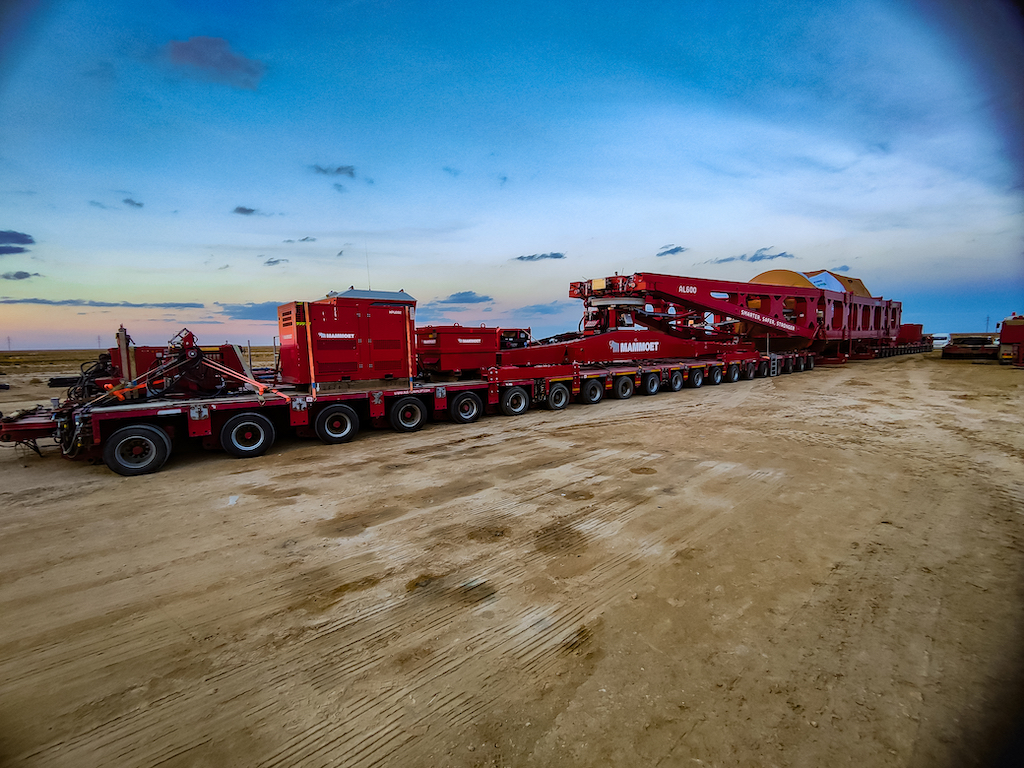
Ali Yoldashov, Mammoet’s Regional Manager-Caspian, referred to it as “Mammoet Port” since it was solely operated by the company. The port’s draft is sufficient, and the ground-bearing pressure capacity can accommodate oversized cargo on the crane outreach. It also enables customs clearance and provides almost infinite storage space. Therefore, it was determined that it was the best and only solution.
While most OOG items could be loaded straight from the vessel to the trailer and then driven directly to the site from the port, this was not possible for the five heaviest components, particularly the 517t gas turbines. The load capacity of most bridges in Uzbekistan would not be able to handle the weight, even though the gas turbines can be transported on a rigid set of conventional trailers with numerous axles.
Therefore, the team came up with a plan to distribute the weight between two separate trailers, one at the front end and the other at the rear end, by hanging the cargo, adding 480 tires to distribute the load. However, some bridges could not handle the extreme axle loads, so the team added an additional 8 axles (64 tires) directly under the hanging cargo to cross these critical bridges, which was a challenge in terms of engineering and operations.
The solution required the use of the AL600 Girder Frame, a specialist piece of equipment designed to transport power equipment weighing more than 500t. The AL600 is unique in design and capacity and can transport heavy loads to remote locations with road restrictions. The AL600 sits on two independent trailers and can carry exceptional weights using a load spreader system, with a modular design that allows for up to two sets of 20 axle lines.
The AL600 was designed and built from high-strength steel to keep its self-weight as low as possible, making it light yet flexible and robust. The low lenience for axle loads on Uzbekistan bridges was a crucial factor in this design. However, the project site could not accommodate the size of the AL600 convoy, which was over 100m in length, so the cargo was transferred to Mammoet Self-Propelled Modular Trailers (SPMTs).
“The AL600 was designed and built from high-strength steel to keep the self-weight as low as possible,’ Marek explains. “It has a very good ratio of self-weight to capacity of cargo. This means it’s light but flexible and strong. This was an important factor for the Uzbekistan bridges, which have really low lenience for axle loads,”explains Mammoet Operations Manager, Marek Lysko.
Because the project site couldn’t accommodate the size of the AL600 convoy, which was over 100m in length the cargo was transferred onto Mammoet Self-Propelled Modular Trailers (SPMTs).
Asked what made Mammoet’s approach unique and how it benefited the customer, Lysko answers: “The customer took advantage of the combination of Mammoet’s specialist equipment, and engineering and logistics expertise to overcome obstacles and bottlenecks enroute. However, I think the biggest benefit for our customer was the end-to-end logistics solution that was provided by a single company, instead of having to coordinate multiple suppliers. This improved overall efficiency and alignment of delivery schedules, mitigated risks and enhanced safety.”


